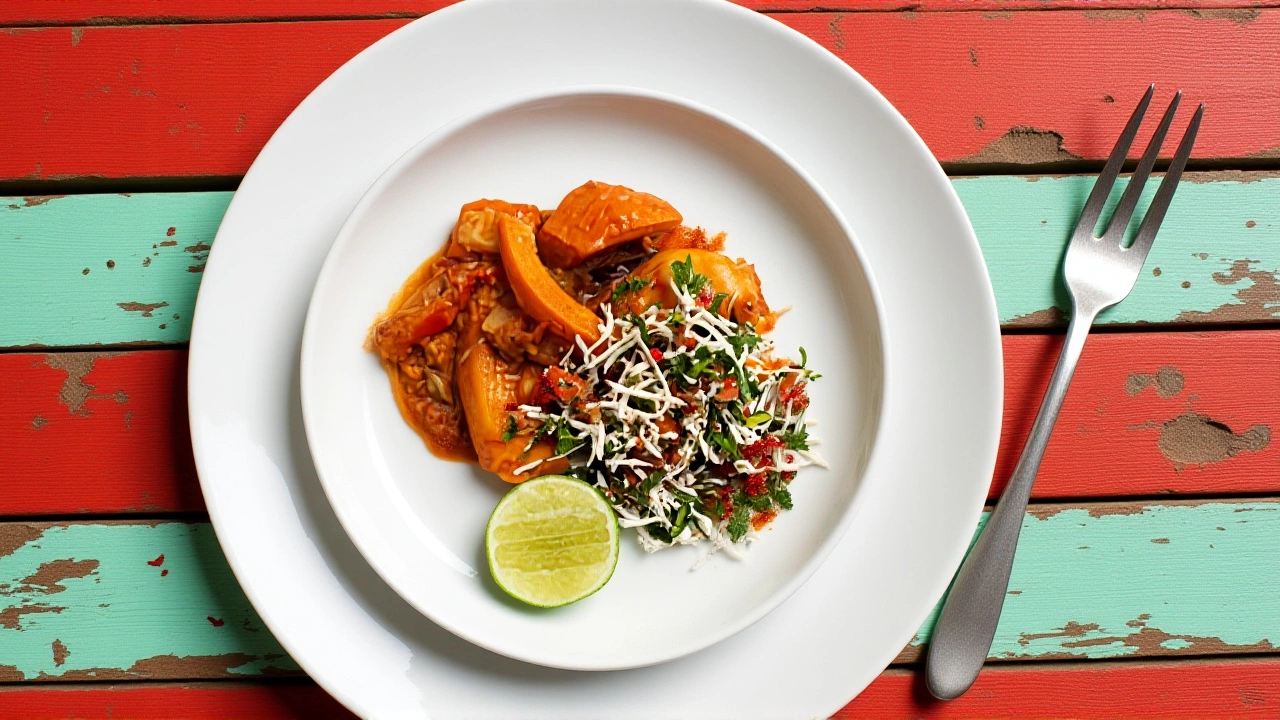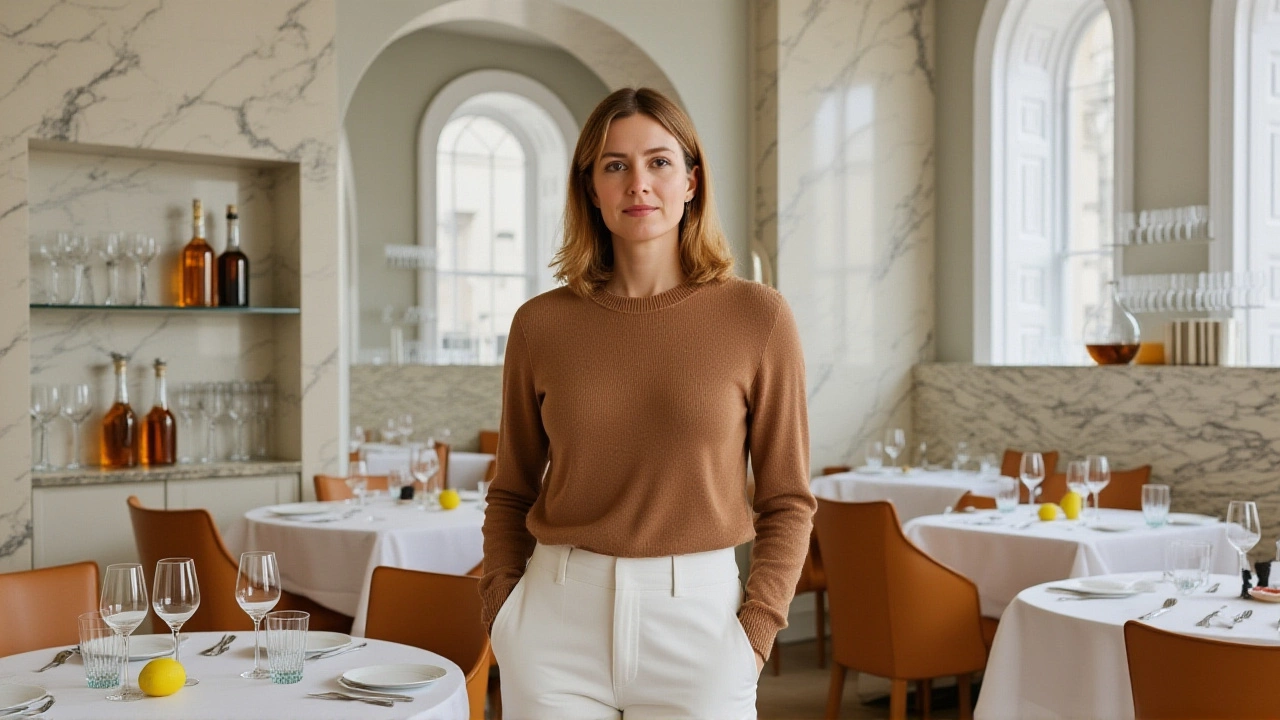Skye Gyngell Travels to Sri Lanka to Uncover the Truth Behind Its Fiery Curries

When Skye Gyngell stepped off the plane in Colombo, she didn’t bring a single recipe book—just an open palate and a quiet curiosity. The British chef, once at the helm of Spring at Somerset House and earlier at Petersham Nurseries, had spent years crafting delicate, herb-forward dishes in London’s most celebrated kitchens. But what drew her to Sri Lanka? The heat. Not the humidity, not the sun—but the kind of heat that lingers on the tongue, builds slowly, and doesn’t beg for mercy. Her journey, documented in The Independent’s feature "If you can't stand the heat: Skye Gyngell visits Sri Lanka to check out the locals' fiery curries," wasn’t about chasing spice for shock value. It was about understanding balance.
The Heat That Doesn’t Burn
Sri Lankan curries aren’t like the searing, one-note chilies you find elsewhere. They’re layered. Complex. The fire comes from fresh red chilies, yes—but also from toasted coriander seeds, tamarind’s sour punch, and the deep umami of fish sauce. Gyngell watched home cooks in Kandy and Galle prepare dishes with nothing more than a mortar and pestle, grinding spices by hand, tasting as they went. "It’s not about how hot it is," one cook told her. "It’s about how it makes you feel afterward. Do you want more? Or do you want water?" That distinction, she realized, was everything.Back in London, her own Skye Gyngell lobster curry from her 2010 cookbook A Year in My Kitchen had become something of a cult classic. But the version people were copying—on blogs like Chilli and Mint—wasn’t the original. It was a monkfish adaptation, born from a home cook’s desire to make it more accessible. They swapped lobster for 850g of monkfish, cut into 2-inch chunks. Reduced sugar from a full tablespoon to half. Dropped the toasted coconut flakes. Used tamarind water instead of soaking whole pods for 20 minutes. It was a humble act of rebellion—and it worked.
From Somerset House to Sri Lankan Streets
The connection between Spring at Somerset House and Sri Lankan food might seem odd at first. But Edible LA got it right in their 2011 "London Crawl" piece: they paired Gyngell’s restaurant with Hoppers, London’s then-new Sri Lankan eatery, as two of the city’s most essential dining experiences. One offered clean, seasonal British fare with global influences. The other delivered bold, ancestral flavors from an island thousands of miles away. Both, in their own way, were about precision. About respect.Gyngell’s dishes never shouted. They whispered—then lingered. That’s why the monkfish curry adaptation resonated so deeply. It wasn’t just a substitution; it was an interpretation. The original recipe called for tamarind pods soaked in hot water for exactly 20 minutes. The blogger used pre-made tamarind water. A small change. But it altered the texture, the acidity, the soul of the dish. Gyngell didn’t mind. In fact, she’d later tell friends: "That’s how food survives. It gets passed around. It changes. It becomes someone else’s memory."
Why This Matters Beyond the Kitchen
In an era of Instagram-ready food porn—overloaded platters, neon sauces, "spicy challenge" videos—Gyngell’s trip felt like a quiet correction. She didn’t go to Sri Lanka to eat the spiciest curry on the menu. She went to learn how heat is used as a seasoning, not a weapon. How a single chili, balanced with coconut milk, garlic, and a pinch of jaggery, can elevate a simple fish stew into something transcendent.Her influence, subtle but real, helped shift London’s culinary conversation. Before Hoppers opened, Sri Lankan food was a footnote. Now, it’s a destination. And Gyngell’s version of the curry—whether made with lobster, monkfish, or even chicken—became a bridge. A way for people who’d never left the UK to taste something real, something rooted.

What’s Next for Gyngell and Sri Lankan Cuisine?
There are rumors she’s working on a new book—tentatively titled Heat and Harmony—that explores how different cultures use spice to create depth, not just heat. Early drafts include chapters on Kerala’s red chilies, Thai bird’s eye peppers, and Mexican habaneros. But she’s still quiet about it. What she did say, over tea in a Colombo courtyard: "I don’t want to teach people how to cook Sri Lankan food. I want them to fall in love with it first. Then they’ll find their own way."Meanwhile, the monkfish curry recipe from Chilli and Mint still gets 300+ hits a month. The original lobster version? It’s in the A Year in My Kitchen index—page 142. Both are alive. Both are changing. And both trace back to one chef’s decision to get on a plane, sit on a floor in a village kitchen, and just... taste.
Frequently Asked Questions
How did Skye Gyngell’s Sri Lankan trip influence her cooking style?
Gyngell’s time in Sri Lanka shifted her focus from ingredient purity to flavor harmony. She began incorporating more layered heat—using chilies not just for spice, but as part of a flavor architecture that included sour, sweet, and umami. This is evident in her later dishes, where even mild curries carry a subtle, building warmth that lingers, mirroring Sri Lankan techniques.
Why is the monkfish curry adaptation significant?
The monkfish version, popularized by the Chilli and Mint blog in 2011, made Gyngell’s luxury lobster recipe accessible to home cooks. By swapping ingredients—using tamarind water instead of soaked pods, reducing sugar, omitting coconut—it became a democratic version of fine dining. It proved that authenticity isn’t about exact replication, but about respecting intent.
What’s the difference between Sri Lankan and Indian curries?
Sri Lankan curries use more fresh chilies and less dried spice powder than most Indian versions. They rely heavily on coconut milk, tamarind, and fish sauce for depth, creating a brighter, tangier profile. Indian curries often use garam masala and yogurt-based bases, while Sri Lankan dishes are typically oilier, with a more pronounced heat that builds gradually rather than hitting immediately.
Where can you find authentic Sri Lankan food in London today?
Hoppers in Soho remains one of London’s most acclaimed Sri Lankan restaurants, praised for its kottu roti and short rib curry. Other spots like Colombo Kitchen in Peckham and Little Lanka in Croydon offer more regional dishes, like pol sambol and jaffna crab curry. All three trace their inspiration, directly or indirectly, to the growing interest sparked by chefs like Gyngell and early adopters in the 2010s.
Is Skye Gyngell still involved with Spring at Somerset House?
No. Gyngell left Spring at Somerset House in 2013 to focus on writing and personal projects. The restaurant closed in 2017. But her legacy endures: the clean, seasonal aesthetic she championed still influences chefs across London, and her cookbook remains a touchstone for those exploring global flavors with restraint and intention.